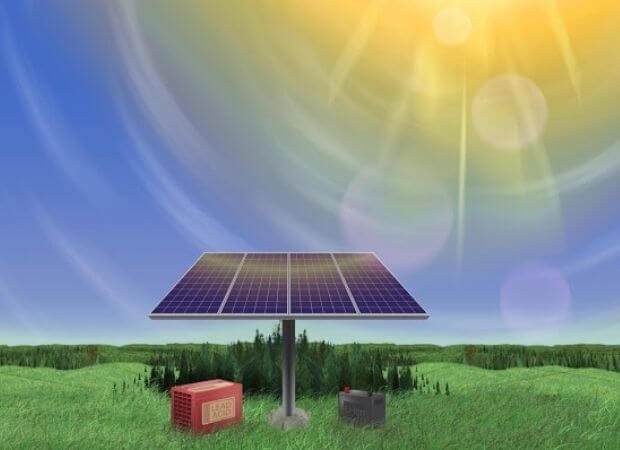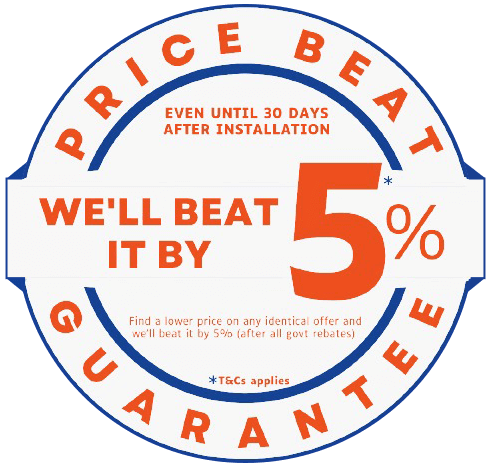Blog
 Sep02
Sep02
Can You Add a Solar Battery To an Existing Solar Power System?
Solar systems have been used to store excess power with batteries for years. However, until recently, they were only practical for a few, mostly off-grid solar systems, due to their high cost and low efficiency. But over the years the battery technology has improved and prices have dropped, making them a viable option for many grid-tied solar systems as well.
Batteries may not have made sense when your system was installed a few years ago. However, as the market changes and technology advances, you may find yourself wishing you had energy storage to save on more energy costs.
If you’re wondering if batteries can be added to an existing solar panels system, the answer is yes! There are different techniques to incorporate battery power into your existing solar system. But, before we give you your options for getting batteries for your system, let’s briefly clarify how batteries work.
How Solar Battery Works?
As the sun shines upon your solar panel system, the energy is converted into DC electricity. Once your inverter receives the power, it converts it to AC electricity for use around the home or offices. When your system produces energy, you can use it to power your lights, appliances, and devices. However, what happens when more electricity is produced than you can use?
This is where you would install a battery. In fact, in the event that you use more electricity than your solar system produces, you can draw energy from a battery instead of the grid.
Different Ways To Install a Battery for Your Solar System
Adding a battery to a grid-tied solar system is possible in most cases, but the complexity depends on various aspects. So, here are a few ways to add a battery to your solar system.
Storage-Ready Solar System
The best thing you can do when having your Solar panels system installed is to plan for installing batteries at a later time by opting for a battery ready inverter or a hybrid inverter that are compatible with battery addition. You may have wanted to keep the upfront investment low during the initial system installation or waited for prices to drop. In either case, you prepared yourself for the future. After you determine that installing a battery makes good financial sense, you can do so by getting a battery added. It is the cheapest and easiest option, requiring less labour and materials than the other two options, as mentioned below.
However, if you did not install a storage-ready battery solar system, you can integrate your battery into your system either via DC coupling or AC coupling.
DC Coupled System
DC Coupled Systems replace your inverter with one that connects to a battery and solar panel system. Inverters of this type are called hybrid inverters. The battery is charged by the DC electricity generated by the solar panels. Then, the power is converted into AC electricity by the hybrid inverter. If you wish to use AC power in your home or business, you can do that either by taking it off the grid or by using it.
In this case, you’ll lose a lot less energy produced by your panels during the conversion process. Because power only passes from DC to AC, whereas in an AC Coupled System (explained next), the energy goes from AC to DC (to charge the battery, then back to AC again). However, this option is likely to cost more upfront.
In case you are approaching the end of the lifespan of your inverter, and you have had your solar system for a while, DC coupling might be a great choice for you. String inverters last about fifteen years, so you might as well upgrade to one that uses batteries instead.
AC Coupled System
The next option is to install an AC coupled system, which uses your traditional inverter as well as a storage inverter for charging your battery. Your panels produce DC power, which is converted to AC power by the inverter for self-usage. Any excess energy produced is then sent to the battery for storage.
An AC coupling system is generally easier to install, versatile, and inexpensive. It can be used with a number of different inverters. This system has slightly lowered efficiency, however. Your home uses AC electricity from the grid, whereas batteries store DC power. In order to use the battery in your home or business, it must then be converted into AC power again. These extra steps result in more energy being lost as compared to the DC Coupling system.
If you are planning to go solar, Sunburn Solar can help. We at Sunburn Solar, are experts when it comes to in-home battery storage systems, and we will help you determine if adding solar battery storage to your existing solar power system is the right decision, both short and long-term. To find out more, please request a no-obligation callback or call us at 1300 673 166.
© 2025 sunburnsolar.com.au. All rights reserved.

